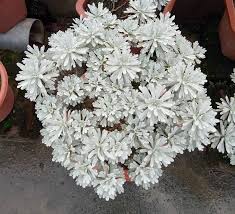Famous Imperial Palaces in Chinese History
China’s rich and storied history is reflected in the magnificent architectural wonders created by its emperors over the centuries. From the grandiose palaces of the imperial dynasties to the intricate structures that reflect the country’s political, cultural, and spiritual beliefs, the imperial palaces of China have always stood as symbols of power, wealth, and heritage. The design and function of these palaces were crucial in the emperor’s governance and were deeply tied to traditional Chinese beliefs in cosmology, hierarchy, and the divine mandate of the emperor.
In this article, we will explore some of the most famous imperial palaces in Chinese history, examining their architectural grandeur, historical significance, and roles in the political, cultural, and ceremonial life of China.
1. The Forbidden City (Beijing)
Historical Context: The Forbidden City, located in the heart of Beijing, is perhaps the most iconic and famous imperial palace in China’s history. Originally built during the Ming dynasty under Emperor Yongle between 1406 and 1420, it served as the imperial palace for both the Ming and Qing dynasties until the fall of the Qing dynasty in 1912. This enormous palace complex, which spans about 180 acres and contains approximately 980 buildings, was the political and ceremonial center of Chinese imperial life for over five centuries.
Architectural Significance: The Forbidden City is an architectural masterpiece that adheres strictly to the principles of traditional Chinese design. Its layout reflects the idea of cosmic order, with the emperor at the center of the universe. The palace is divided into two main sections: the Outer Court, where state affairs were conducted, and the Inner Court, which served as the emperor’s living quarters and the residence of his family and concubines.
The Forbidden City is renowned for its use of color, especially the dominant gold and red tones, which were associated with imperial power. The yellow roof tiles, a color reserved exclusively for the emperor, symbolize the emperor’s status as the “Son of Heaven.” Its architectural features include grand halls, intricate decorative elements, and expansive courtyards, all designed to impress visitors and assert imperial authority.
Political and Cultural Role: The Forbidden City was the political center of the empire, where the emperor held court, made important decisions, and received foreign dignitaries. The palace was also a symbol of the emperor’s divine right to rule, and many rituals and ceremonies were conducted within its walls. The significance of the Forbidden City extends beyond its physical structure; it encapsulates the ideas of hierarchy, order, and governance that defined imperial China.
2. The Summer Palace (Beijing)
Historical Context: The Summer Palace, located in the northwestern suburbs of Beijing, is another remarkable palace complex with a rich history. Originally built in the 18th century during the Qing dynasty under Emperor Qianlong, the Summer Palace was designed as a retreat from the scorching summer heat of the capital. It served as the residence of the imperial family during the warmer months and was a place of leisure and relaxation.
The Summer Palace was extensively renovated and expanded during the reign of Empress Dowager Cixi in the late 19th century. The palace complex became a symbol of imperial grandeur and a reflection of the Qing dynasty’s wealth and cultural sophistication.
Architectural Significance: The Summer Palace is a stunning example of classical Chinese landscaping and architecture. The palace complex is centered around the large Kunming Lake, with structures such as the Longevity Hill offering sweeping views of the surrounding landscape. The palace is famous for its beautiful gardens, pavilions, bridges, and temples, all of which are designed to harmonize with the natural surroundings.
One of the most famous structures within the Summer Palace is the Long Corridor, a covered walkway adorned with over 14,000 paintings depicting scenes from Chinese history, mythology, and literature. The Summer Palace also features the Marble Boat, a lakeside pavilion built from marble, which is an iconic symbol of the palace.
Political and Cultural Role: While the Summer Palace was not a political center like the Forbidden City, it played an important role in the life of the imperial court. It was a place of relaxation and refuge for the imperial family, particularly during times of political instability. Empress Dowager Cixi spent a significant portion of her later years at the Summer Palace, using it as a retreat while continuing to exert political control over the Qing dynasty.
3. The Imperial Palace of the Tang Dynasty (Chang’an)
Historical Context: During the Tang dynasty (618–907), the imperial palace was located in the ancient capital of Chang’an, which is modern-day Xi’an. Chang’an was the political and cultural heart of China during the Tang dynasty, and its imperial palace complex was one of the largest and most opulent in Chinese history. The Tang imperial palace was a symbol of the dynasty’s wealth, power, and cosmopolitan nature.
Architectural Significance: The imperial palace of the Tang dynasty was vast, with a complex that spanned over several kilometers. It was divided into two main sections: the Inner Court, which housed the emperor and his family, and the Outer Court, where official ceremonies and state affairs took place. The palace was built according to traditional Chinese principles of feng shui, with an emphasis on symmetry and order.
The architecture of the Tang imperial palace was influenced by a blend of Han Chinese and Central Asian styles, reflecting the dynasty’s openness to foreign influences through the Silk Road. The palace was adorned with elaborate murals, decorative elements, and sculptures that depicted various mythological and historical scenes.
Political and Cultural Role: The Tang imperial palace was not only the residence of the emperor but also the seat of governance, where the emperor made critical political and military decisions. The palace was also a hub for cultural exchange, as the Tang dynasty was known for its openness to foreign ideas and influences. The capital of Chang’an was one of the largest cities in the world at the time, attracting traders, diplomats, and scholars from all over Asia, the Middle East, and Europe.
4. The Imperial Palace of the Yuan Dynasty (Dadu)
Historical Context: The Yuan dynasty (1271–1368), established by the Mongol ruler Kublai Khan, was unique in that it was the first foreign dynasty to rule over all of China. The capital of the Yuan dynasty was Dadu, which is modern-day Beijing. The imperial palace of the Yuan dynasty was a blend of Mongol and traditional Chinese architectural styles, reflecting the dynastic shift in power from the Han Chinese to the Mongols.
Architectural Significance: The imperial palace of the Yuan dynasty, located in the center of Dadu, was designed with a blend of Mongol and Chinese elements. Unlike earlier palaces, the Yuan palace had a more open and spacious layout, with large courtyards and wide streets to accommodate the Mongol emperor’s lifestyle. The palace was decorated with Mongol motifs and was designed to reflect the imperial power of Kublai Khan.
Political and Cultural Role: The Yuan dynasty palace in Dadu was central to the administration of the empire. As the first Mongol emperor of China, Kublai Khan used the palace as the political center from which he managed both his Mongol empire and the newly unified China. The palace was also an important symbol of Mongol dominance over the Chinese people, serving as a center of imperial power and cultural fusion between the Mongol and Chinese traditions.
5. The Imperial Palace of the Song Dynasty (Hangzhou)
Historical Context: During the Southern Song dynasty (1127–1279), the capital was relocated to Hangzhou in southeastern China. The imperial palace in Hangzhou was the political and cultural center of the Southern Song dynasty. Though much of the palace complex no longer exists today, historical records describe it as an elegant and sophisticated place, built to reflect the Song dynasty’s cultural achievements.
Architectural Significance: The imperial palace of the Southern Song dynasty was noted for its use of water features, gardens, and fine architectural elements. The Song dynasty was known for its refinement in art, culture, and architecture, and this was reflected in the palace’s design. The palace complex was strategically situated near the West Lake, providing scenic beauty and a sense of tranquility for the emperor.
Political and Cultural Role: The imperial palace in Hangzhou was not as large or grand as some of the other imperial palaces, but it played a vital role in the Song dynasty’s governance and cultural life. The Song emperors were known for their focus on administrative efficiency, culture, and trade, and the palace reflected these priorities. During the Southern Song period, Hangzhou flourished as a center of commerce, culture, and scholarship, with the imperial palace serving as the heart of the dynasty’s political and cultural life.
Conclusion
The imperial palaces of China stand as monumental symbols of power, culture, and history. Each palace, whether it is the Forbidden City, the Summer Palace, or the ancient palaces of the Tang and Yuan dynasties, reflects the unique character and aspirations of the ruling dynasty. These architectural wonders were not only residences for the emperors but also centers of political and cultural life, shaping the destiny of China for centuries. As a testament to China’s imperial past, the palaces continue to fascinate historians, architects, and visitors alike, preserving the legacy of China’s dynastic rule and offering a glimpse into the grandeur of its royal history.


